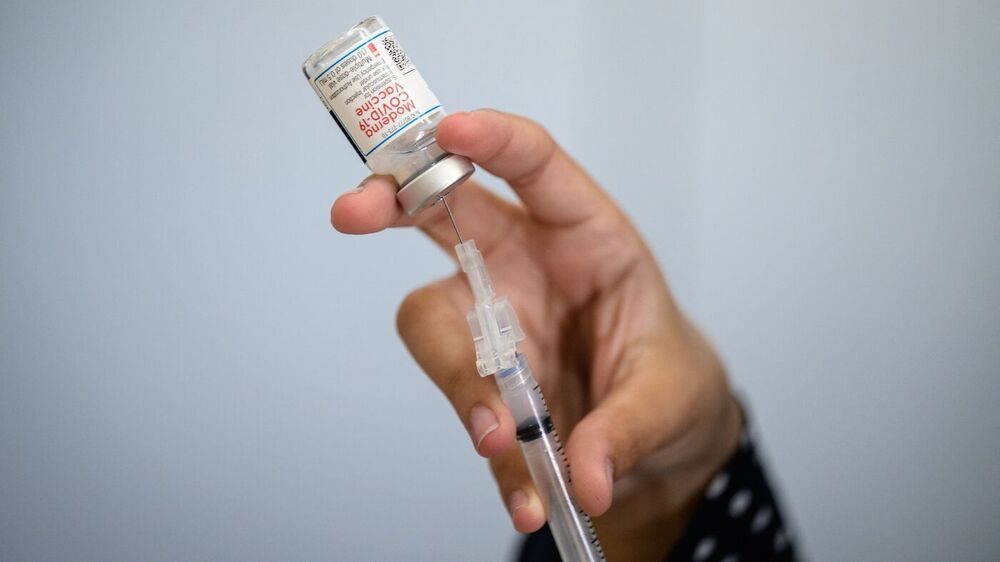Seattle-based company Jetoptera says its air-accelerating Fluidic Propulsive System, which works a lot like a Dyson “bladeless” fan, produces thrust for half the fuel of a small turbojet while being the “most silent propulsion system in the skies.”
Get the latest international news and world events from around the world.

Using AI to gauge the emotional state of cows and pigs
An animal scientist with Wageningen University & Research in the Netherlands has created an artificial-intelligence-based application that can gauge the emotional state of farm animals based on photographs taken with a smartphone. In his paper uploaded to the bioRxiv preprint server, Suresh Neethirajan describes his app and how well it worked when tested.
Prior research and anecdotal evidence has shown that farm animals are more productive when they are not living under stressful conditions. This has led to changes in farming practices, such as shielding cows’ eyes from the spike that is used to kill them prior to slaughter to prevent stress hormones from entering the meat. More recent research has suggested that it may not be enough to shield farm animals from stressful situations—adapting their environment to promote peacefulness or even playfulness can produce desired results, as well. Happy cows or goats, for example, are likely to produce more milk than those that are bored. But as Neethirajan notes, the emotional state of an animal can be quite subjective, leading to incorrect conclusions. To address this problem, he adapted human face recognition software for use in detecting emotions in cows and pigs.
The system is called WUR Wolf and is based on several pieces of technology: the YOLO Object Detection System, the YOLOv4 that works with a convolution neural network and Faster R-CNN, which also allows for detection of objects, but does so with different feature sets. For training, he used the Nvidia GeForece GTX 1080 Ti GRP running on a CUDA 9.0 computer. The data consisted of thousands of images of cows and pigs taken with a smartphone from six farms located in several countries with associated classification labels indicating which physical features could be associated with which mood—raised ears on a cow, for example, generally indicate the animal is excited.
Toyota Shows Off Its First Electric Car | EV News
Toyota finally unveils its first EV, an all electric SUV called bZ4x but it also responded to pressure of some investors to cut out the anti-EV lobbying. InsideEVs and Forbes contributor Tom Moloughney will be here to weigh in, plus other EV news of the week.
https://www.youtube.com/channel/UCdX0BJNon1c6GfOdeS3pyDw.
OUR SPONSORS:
❤️ XPENG MOTORS — Follow China’s leading smart EV automaker on Facebook at https://www.facebook.com/XpengMotorsGlobal.
My P7 video: https://youtu.be/9o0xGNewz5M
IMPORTANT NOTICE: Sponsors of this channel do not in any way control or influence the opinion or views expressed in E for Electric videos. All sponsor content is clearly marked and announced in every instance. Views and opinions expressed on this channel do not necessarily represent or reflect the opinions of our sponsors, their partners or their associates.



Jennifer Huse — Innovative Scientific Solutions For Revitalizing Camden, NJ, USA — Mayoral Candidate
Innovative, Scientific, And Empathic Solutions For Revitalizing Camden, NJ, USA — Jennifer A. Huse, Mayoral Candidate, 2021
Jennifer Huse is a candidate for Mayor of Camden, New Jersey, USA, running in the upcoming 2021 election, as an independent.
Information on Jennifer’s campaign can be found at — https://www.jahformayor.com/
Jennifer has a background and education in Cell and Molecular Biology, Exercise Science, Social Media Management, Communications, Marketing and Business Management, and her diverse background, gives a unique perspective when it comes to her ideas for the future improvement of the city.
A key pillar of Jennifer’s platform is in testing and advancing novel solutions for improving current social systems and introducing new technologies via a model called The Center for Scientific Solutions.

Young blood to old – where do the answers to aging lie?
“After hopefully demonstrating efficacy through the pilot study, Conboy says that plans are underway for a 200–300 person, placebo-controlled Phase 3 trial to prove the use of the plasma dilution as a technology that innovatively treats co-morbidities of aging.”
This could be the first bridge.
UC Berkeley’s Irina Conboy talks parabiosis, plasma dilution, and why young blood may not hold the all answers.

New Blood Tests Should Show How Long A COVID-19 Vaccine Will Protect You
It took many months and tens of thousands of volunteers to gather the data showing that the current crop of COVID-19 vaccines are safe and effective.
But what if new vaccines are needed to deal with dangerous variants of the coronavirus? Waiting months is not an attractive option.
So researchers are trying to come up with tests that can be performed using a blood sample that will determine not only whether a vaccine will work but also for how long.
3D printing increases memory of flexible Silicon chips 7000 times
The U. S. Air Force Research Laboratory (AFRL) and American Semiconductor have combined traditional manufacturing techniques with 3D printed circuitry to produce a flexible Silicon-on-polymer chip.
Besides its material qualities, the new chip has a memory more than 7000 times larger than any comparable commercially available devices, making it suitable as a micro-controller to be integrated into other objects.